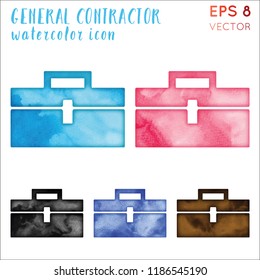A Relative Analysis Of Interior And Exterior Paint: Necessary Differences And Applications
A Relative Analysis Of Interior And Exterior Paint: Necessary Differences And Applications
Blog Article
Authored By-Hastings copyright
When you're choosing in between exterior and interior paint, it's important to recognize their fundamental distinctions that affect both performance and aesthetic appeals. Inside paints are crafted for reduced VOC degrees and smoother finishes, making them perfect for indoor spaces, while exterior paints are designed to endure extreme climate condition and UV direct exposure. Each type serves an unique function, but knowing when to make use of one over the other can substantially affect your job's end result. So, what aspects should you consider when making your choice?
Structure and Solution
When selecting between interior and exterior paint, understanding their make-up and formula is essential. Inside paints typically contain a lower quantity of unstable natural substances (VOCs), making them safer for interior air top quality. You'll discover they usually have a smoother coating, which boosts their ability to stand up to spots and allows for simpler cleaning. They're made to withstand the roughness of indoor settings, consisting of differing humidity levels and temperature fluctuations.
On the other hand, outside paints are formulated to withstand harsher problems. They usually include greater levels of pigments and ingredients to stand up to fading from UV rays, in addition to to stop mildew and mold growth. Their structure includes much more binders and resins, which supply much better attachment to surface areas subjected to the components. This ensures the paint can withstand rainfall, snow, and varying temperature levels without peeling or cracking.
Performance and Durability
Reviewing performance and toughness is important when selecting in between exterior and interior paint. Inside paint is made for surfaces that experience less deterioration. It normally stands up to fading and scuffing, making it excellent for living spaces and rooms. Nonetheless, it might not hold up well in high-moisture locations like kitchens and bathrooms without proper formulation.
On the other hand, outside paint encounters harsher conditions. It's crafted to endure UV rays, rainfall, and temperature level fluctuations. This type of paint typically consists of ingredients that protect against mold and mildew and mold growth, making certain long life in numerous climates. When https://commercial-painters-near33290.blogspothub.com/30727822/how-to-determine-a-qualified-painting-specialist-important-warning-signs-to-keep-an-eye-out-for use outside paint, you can expect it to last a number of years much longer than indoor paint, gave it's used properly.
One more vital difference depends on the surface options. Inside paints typically have a range of coatings for visual appeal, while outside paints prioritize toughness over sheen. If you're seeking something that can handle the components, exterior paint is your best choice.
In contrast, if you're concentrated on indoor aesthetic appeals with less concern for extreme problems, indoor paint might be ideal. Eventually, your selection needs to align with the certain needs of the atmosphere.
Visual Considerations
A fresh layer of paint can transform an area, yet visual considerations play a critical function in your choice between interior and exterior alternatives. When you're picking paint, think about the state of mind you wish to produce. Interior paint allows you to discover a broader range of shades and finishes, enabling you to express your personal design and improve your home's atmosphere. Whether https://www.theunion.com/classifieds/service/home/paint/eric-whatley-painting-painting-contractor-lop-resident-specializing-in-high/ad_07040830-c2c4-5ccd-8ab5-4552def62c2f.html select soft pastels or bold colors, the appropriate interior paint can make your spaces feel comfy, dynamic, or peaceful.
On the other hand, outside paint requires to line up with your home's style and the surrounding environment. Here, you're not simply making a design declaration; you're additionally considering aesthetic appeal. Choosing shades that harmonize with your area can improve your home's worth and aesthetic allure. Remember that exterior paint is additionally based on fading and climate modifications, so selecting a timeless shade can save you from constant repainting.
Ultimately, take into consideration how each choice fits your vision. By straightening your paint option with your wanted aesthetic, you can develop areas that reflect your character while maintaining capability.
Conclusion
When it pertains to selecting paint, comprehending the essential differences between exterior and interior options is necessary. Interior paints focus on appearances and reduced VOCs, making them ideal for enhancing your interior rooms. In contrast, exterior paints are developed for resilience and weather resistance, protecting your home from the elements. By considering see this here and the atmosphere, you can confidently choose the right paint to accomplish the look and durability you desire for your area.
